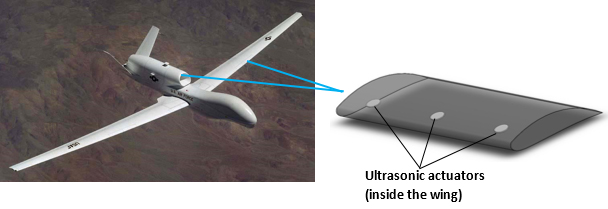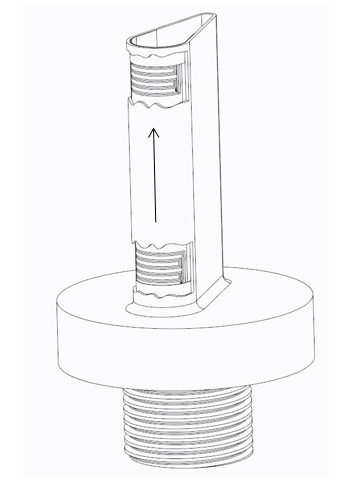
Aircraft icing is a critical concern for rotorcraft and fixed wing aircraft in both the military and civilian domains. In-flight icing on aerodynamic and control surfaces can lead to dramatic losses in lift and control, and have caused hundreds of accidents and more than a thousand deaths in the past few decades. Various types of ice protection and sensing systems exist, but each has its own drawbacks such as weight, power consumption, or hazardous materials.
Ultrasonic de-icing, a method developed by Penn State University and Guidedwave, utilizes ultrasonic vibration to fracture and delaminate ice accreted on an aircraft structure such as a wing leading edge or an engine inlet. Ultrasonic de-icing is non-thermal and consumes much less power than comparable electro-thermal blanket systems. It is also safe for composite materials that may be damaged by thermal de-icing methods. Guidedwave is in the process of developing and testing ultrasonic de-icing technology in cooperation with the U.S. Air Force.
Guidedwave has also developed an ice sensing probe technology that utilizes ultrasonic guided waves to detect the accretion of very thin layers of ice (as little as 0.010”) to provide early warning of icing conditions to crew members for rotorcraft and fixed wing aircraft. Guidedwave is in the process of fully commercializing this ice sensing technology in cooperation with the U.S. Navy.

